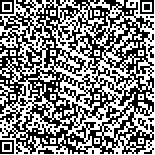本文已被:浏览 4132次 下载 2767次
中文摘要: 我国月球探测工程分为"绕、落、回"三期实施。其中一期即绕月探测工程,其主要科学探测任务是对月球开展全球性、整体性和综合性的科学探测,包括以下4项科学目标:获取月球表面三维立体影像;分析月球表面元素含量和物质类型的分布特点;探测月壤特性;探测地月空间环境。在这4个科学目标中以全月球数字地图和三维立体影像图的获取为重点目标,结合物质成分探测、月壤特性探测和空间环境探测的成果,既与国际月球探测的发展趋势接轨,又有自己的创新特色。本文将主要介绍中科院在绕月探测工程中主要获得的科学研究成果。
Abstract:There are three periods in China’s Lunar Exploration Program,"circling round the moon,landing on the moon and returning," among which the program of the first period is the circumlunar exploration program,and its main scientific exploration task is to conduct global,integral and comprehensive scientific exploration,including the following four scientific goals.They are:obtaining global three-dimensional image of the lunar surface;analyzing the distribution characteristics of the chemical element abundance and material types or mineral compositions of the lunar surface;exploring the physical properties of lunar regolith layer;detecting space environment between the earth and the moon.Among these four scientific goals,the obtaining of the numerical map of the whole moon and three-dimensional image map is the key goal,combining with the results of the detection of material composition,the physical properties of lunar regolith layer,and space environment,and this not only can connect rail with the development trend of the international lunar exploration,but also we have our own innovation characteristics.This paper mainly introduces the main achievements of the Chinese Academy of Sciences obtained in China’s Circumlunar Exploration Program.
文章编号: 中图分类号:V11 文献标志码:
基金项目:
引用文本:
欧阳自远,李春来,邹永廖,刘建忠.绕月探测工程科学应用研究进展[J].中国科学院院刊,2009,(5):530-536.
Ouyang Ziyuan,Li Chunlai,Zou Yongliao,Liu Jianzhong.Progress of Scientific Application and Research of China’s Circumlunar Exploration Program[J].Bulletin of Chinese Academy of Sciences,2009,(5):530-536.
欧阳自远,李春来,邹永廖,刘建忠.绕月探测工程科学应用研究进展[J].中国科学院院刊,2009,(5):530-536.
Ouyang Ziyuan,Li Chunlai,Zou Yongliao,Liu Jianzhong.Progress of Scientific Application and Research of China’s Circumlunar Exploration Program[J].Bulletin of Chinese Academy of Sciences,2009,(5):530-536.


